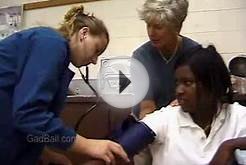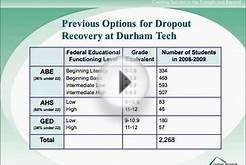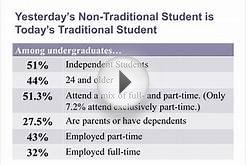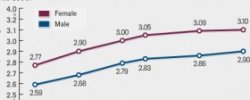|
Outcome Measure |
Definition |
Cohort/Population |
Reporting Subpopulations |
Departments Reporting |
|---|---|---|---|---|
|
During School |
||||
|
Retention rates within institutions |
The percentage of first-time degree or certificate seeking students/beneficiaries who complete their educational program or return to the same institution to continue their studies the following year. |
Cohort consists of any first time students/ beneficiaries enrolled in the institution in a given year. |
* 4-year institutions:
|
ED = Yes (year one to year two)
|
|
Persistence rates of students |
The percentage of the cohort who completed a program or enrolled for credit at any institution in two consecutive years. |
Cohort consists of any first time students/beneficiaries enrolled in an institution in a given year. |
* 4-year institutions:
|
ED = Yes (every 8 years, multiple years for a single nationally representative cohort)
|
|
Course Completion rates within institutions |
The percent of courses attempted for credit that were successfully completed (received a passing grade) in a given year. |
Population includes any student/beneficiary who enrolled in a course for credit in the current year. |
TBD |
ED = Yes (every eight years at the national level)
|
|
Transfer-out rate from institutions |
The percentage of the full-time, first-time students/beneficiaries who transferred to another institution. within 150% of normal time (e.g., 6 years for 4 year institutions, 3 years for 2 year institutions and below). |
Cohort consists of any first time, full-time students/beneficiaries enrolled in the institution in a given year. |
ED = Yes (when reported)
|
|
|
Graduation / Completion |
||||
|
Graduation / Program Completion rates from institutions |
a.) GR 150 - The percentage of first time degree or certificate-seeking students/beneficiaries who complete a degree or certificate within 150% or of normal time.
|
Cohort for GR 150 and GR 200 consists of first time degree or certificate seeking students/beneficiaries enrolled in an institution in a given year followed for 150 percent and 200 percent of the time for normal completion. |
* 4-year institutions:
|
ED = Yes (annually)
|
|
Number of Degrees / Certificate Completions from institutions |
The number of... |
|||
You might also like:




|
Review and Analysis of Definitions of 21st Century Skills, College Readiness, and Career/Postsecondary Readiness: Final Report - Scholar's Choice Edition Book (Scholar's Choice) |







